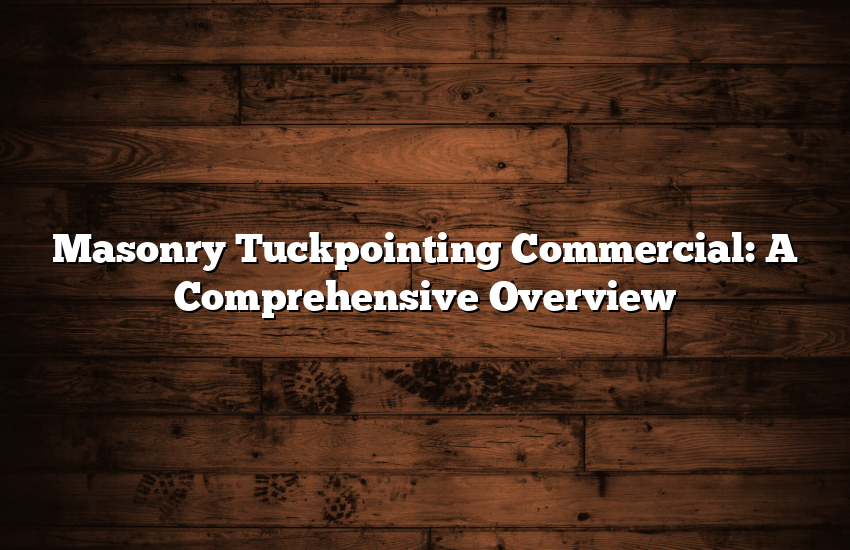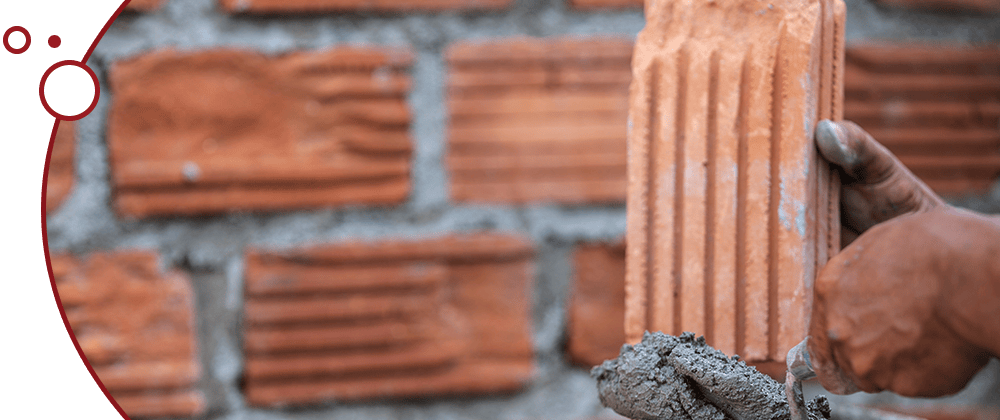
Masonry tuckpointing is an essential maintenance procedure for commercial buildings constructed with brick or stone. This time-honored technique plays a crucial role in preserving the structural integrity and aesthetic appeal of masonry structures.
Table of Contents
What is Masonry Tuckpointing?
Masonry tuckpointing, also known as repointing or brick pointing, involves repairing and replacing the mortar between bricks or stones. It’s a specialized process that requires precision and expertise. The primary goal of tuckpointing is to prevent moisture and other environmental elements from causing further damage to the masonry.
When is Tuckpointing Necessary in Commercial Buildings?
Commercial buildings, particularly those that are historic, often require tuckpointing to maintain their structural integrity. Signs that a building may need tuckpointing include cracked, crumbling, or missing mortar, spalling bricks, and signs of moisture intrusion. Regular inspections by a trained mason can help identify when tuckpointing is necessary.
The Process of Tuckpointing
Tuckpointing involves several steps:
- Removing damaged mortar using tools like grinders.
- Filling the gaps with new mortar that matches the original color and composition.
- Cutting thin strips in the mortar for a clean, finished look.
The Importance of Tuckpointing in Commercial Masonry
Tuckpointing is more than just a cosmetic fix. It is crucial for:
- Preventing water damage and mold growth.
- Maintaining the structural integrity of the building.
- Preserving the historical and aesthetic value of the structure.
Choosing the Right Professionals for Tuckpointing
It’s essential to hire experienced masons who specialize in commercial tuckpointing. They have the skills and tools necessary to match the new mortar to the existing one and ensure the longevity of the repairs.
FAQs on Masonry Tuckpointing for Commercial Buildings
Q1: What is the main purpose of tuckpointing in commercial buildings?
A1: Tuckpointing helps maintain the structural integrity and aesthetic appearance of brick and stone commercial buildings by repairing mortar joints.
Q2: How often should commercial buildings undergo tuckpointing?
A2: The frequency depends on the building’s age, material, and environmental exposure, but generally, every 20-30 years is recommended.
Q3: Can tuckpointing prevent water damage?
A3: Yes, tuckpointing seals the mortar joints, preventing water and moisture from penetrating the masonry, thus mitigating water damage.
Q4: Is tuckpointing necessary for modern commercial buildings?
A4: Yes, even modern buildings can benefit from tuckpointing, especially to address any premature mortar deterioration.
Q5: How do I choose the right contractor for tuckpointing?
A5: Look for experienced masons with a portfolio of commercial tuckpointing projects, and check for licenses, insurance, and references.


